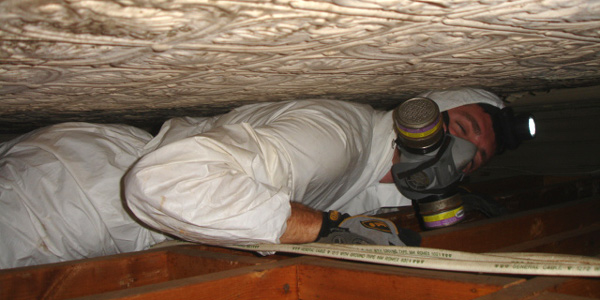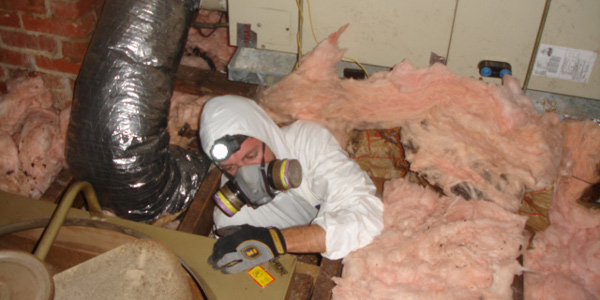- info@wildlifeanimalcontrol.com
Call us for help in your town
Wildlife Control Education
How to Inspect Your House for Wild Animal Entry Holes
If you have animals inside your house, the home inspection is the most critical part of the wildlife control process. You'll never solve the problem until you find every last
entry hole the critters can use to get in your attic or house. You have to seal them shut with professional repairs.
Need animal removal in your hometown? We service over 500 USA locations! Click here to hire us in your town and check prices - updated for year 2020.

How to inspect your house to find wild animals entry holes - Occasionally a skunk, raccoon, squirrel or other wild animals find a suitable shelter in or sometimes under the shed, house or other structure. This may be for couple of days or night until the availability of food or may be for the whole winter if surroundings remain favorable for them, especially in mating and nesting season.
There are many ways to prevent your house from entering the wild animals; some are discussed below:
Cap Chimneys:
You should cap the chimneys properly in order to prevent entry of all types of wild birds and mammals. You will estimate that average cost of capping the chimney of your home is far less than the average cost of removing a trapped animal. Capping the chimneys can prevent the sparks from leaving the chimney too, therefore it could be recommended as a safety device as well.
Housekeeping set up of urban wildlife:
Don’t get panic and try to think and plan how to cope up the problem. Don’t think the wild creature is smarter than you. It just looks that way but it is not the fact. Observe how many squirrels, opossums, raccoons, etc are there where they stay and where they got in. at what time do they keep as they go about their regular day and night affairs. You must check is the wild a mother with her new born? You should not implement the exclusion techniques until you are sure about the all the wildlife is out of the space to be blocked off. If you found some young, for the sake of humanity, please wait till they get old enough to walk out with their mother and then seal the entry points. If you do not wait for the babies to be out themselves and let them out yourself, you may invite some unpleasant situation. These young ones of the wild creature can take few to several weeks to be able to go out with their mum.
When not to live trap:
Usually the native wildlife species have their babies from early spring to early fall means, from March to September. This is the period the period when the young ones are totally dependent on their mother far food as well as protection. Remember! Any step you take that halt mother from caring her children will make her suffer a lot and even slow death of her kids too. These wild families do not stay forever or even for a longer period therefore it is better to wait until the animals vacate on their own in the early fall. After then you can take any kind of action in order to prevent the same situation in future. Keep in mind that live trapping and relocating wild creatures merely makes a vacancy for another to move in. Exclusion techniques and some degree of tolerance are certainly more successful and lasting.
Attics and other crawl spaces:
If you find a wild animal get entered to an attic or a crawl space, shut all the entries except one. In order to determine which hole is being used by the wild creatures to enter and exit, close all the holes with a ball of papers or a piece of plastic or stuff a rag. If this is missing in the next morning, the hole is being used. You can use various tricks to keep these wild mammals at arms length.

Keep the garbage away:
The waste food and garbage are really an attractive thing for the wild animals. So never to put your garbage at the place from where this may become the source of entry to such animals. Garbage cans are to opossums and raccoon are to doves and cardinals.
Trim branches:
Some wild animals including raccoons get entered in your home through trees and branches that are spread largely on to your roof top. Beware they can jump short distances. Therefore keep the large branches trimmed so that they cannot become the source of entering the wild mammals.
Installing bright yard lights:
In order to discourage nocturnal animals from yard space, use a minimum of 80-watt bulb for every 15 square yard. Now if you are confident enough that the wild animals have left, close all the known entry points. You can check the traffic by sprinkling flour on these specific points. Once all the spots become animal-free, seal the entire entry points permanently.
Protecting gardens:
In fact protecting gardens is somewhat more difficult than protecting inside home. You can make a perfect measure to drive wooden stakes or long wire pins into the sod to hold it down until it takes root. Beware! That a very harmful June bug problem can do more damage than raccoons as it damage roots and kill the lawn. Low voltage electric fencing may also be helpful in this regard.

















